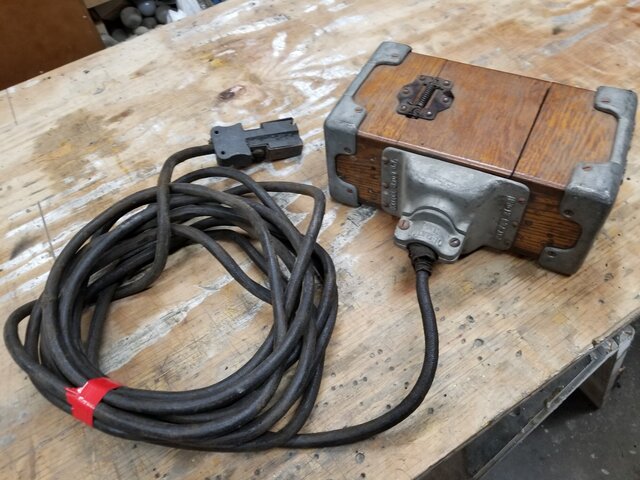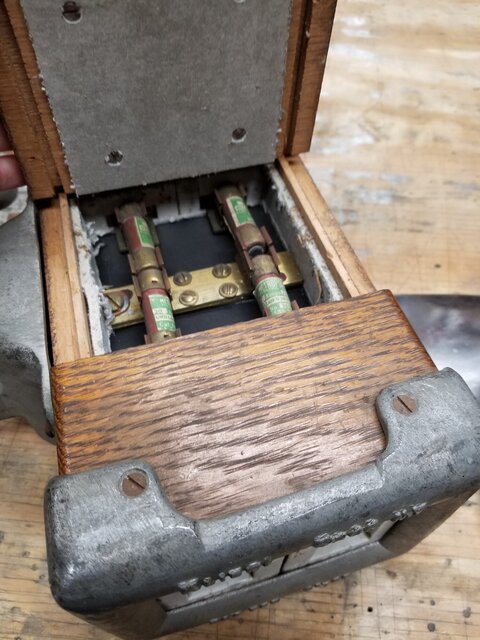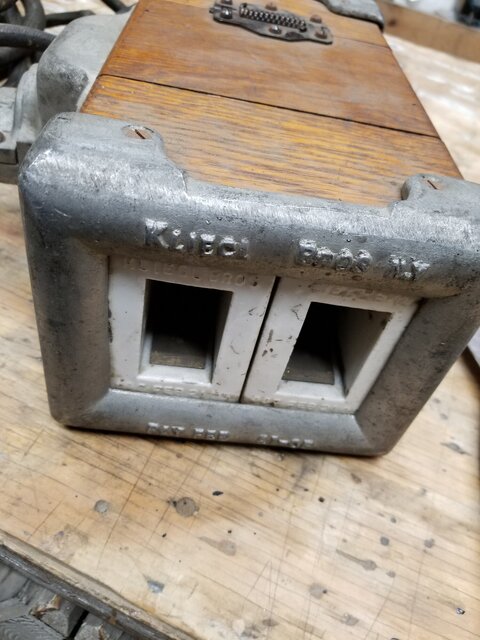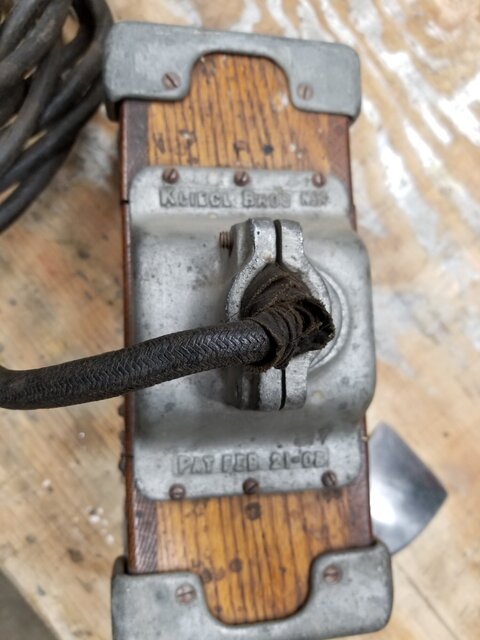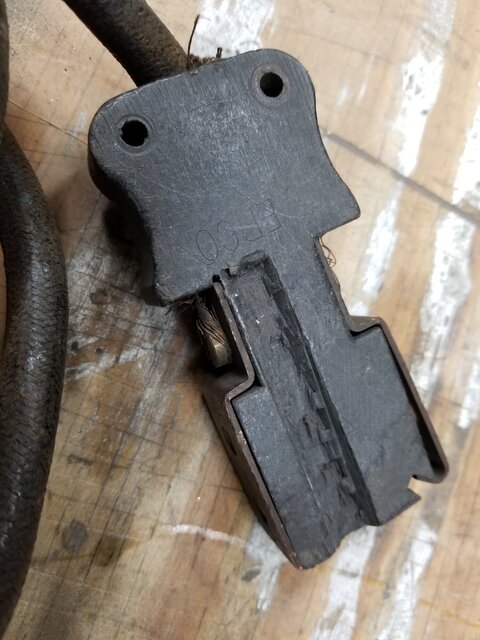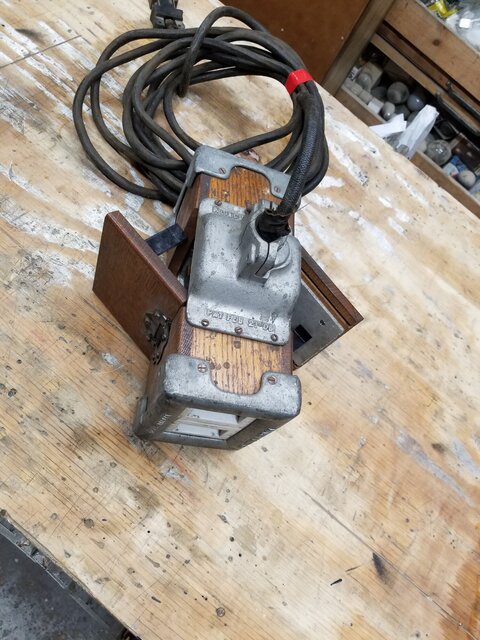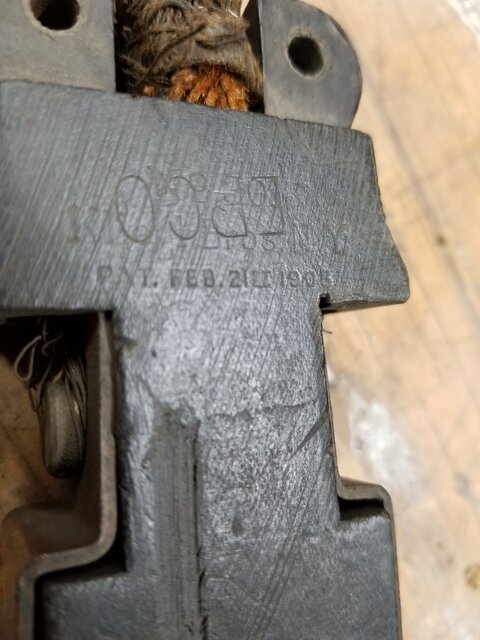Never seen this before. It's Kliegl, but never really looked at those pages on the Kliegl website.
Must I think be for carbon arc fixtures. No evidence of carbon arc's at the 1925 theater and by than most carbon arc's were obsolete. Floor pockets I think have stage plug and could have been to run something.
Be it a drop box from the grid or extension cord from the stage. Suppose one would strike one arc at a time and one might be able to power up four from it.... Wow!
Each fuse - one for the neutral, one for the hot is for each of four 30 Amp (non-polorized very unsafe outlets.)
I wonder if the groove ground into the plug is some attempt to polarize it?
Must I think be for carbon arc fixtures. No evidence of carbon arc's at the 1925 theater and by than most carbon arc's were obsolete. Floor pockets I think have stage plug and could have been to run something.
Be it a drop box from the grid or extension cord from the stage. Suppose one would strike one arc at a time and one might be able to power up four from it.... Wow!
Each fuse - one for the neutral, one for the hot is for each of four 30 Amp (non-polorized very unsafe outlets.)
I wonder if the groove ground into the plug is some attempt to polarize it?



